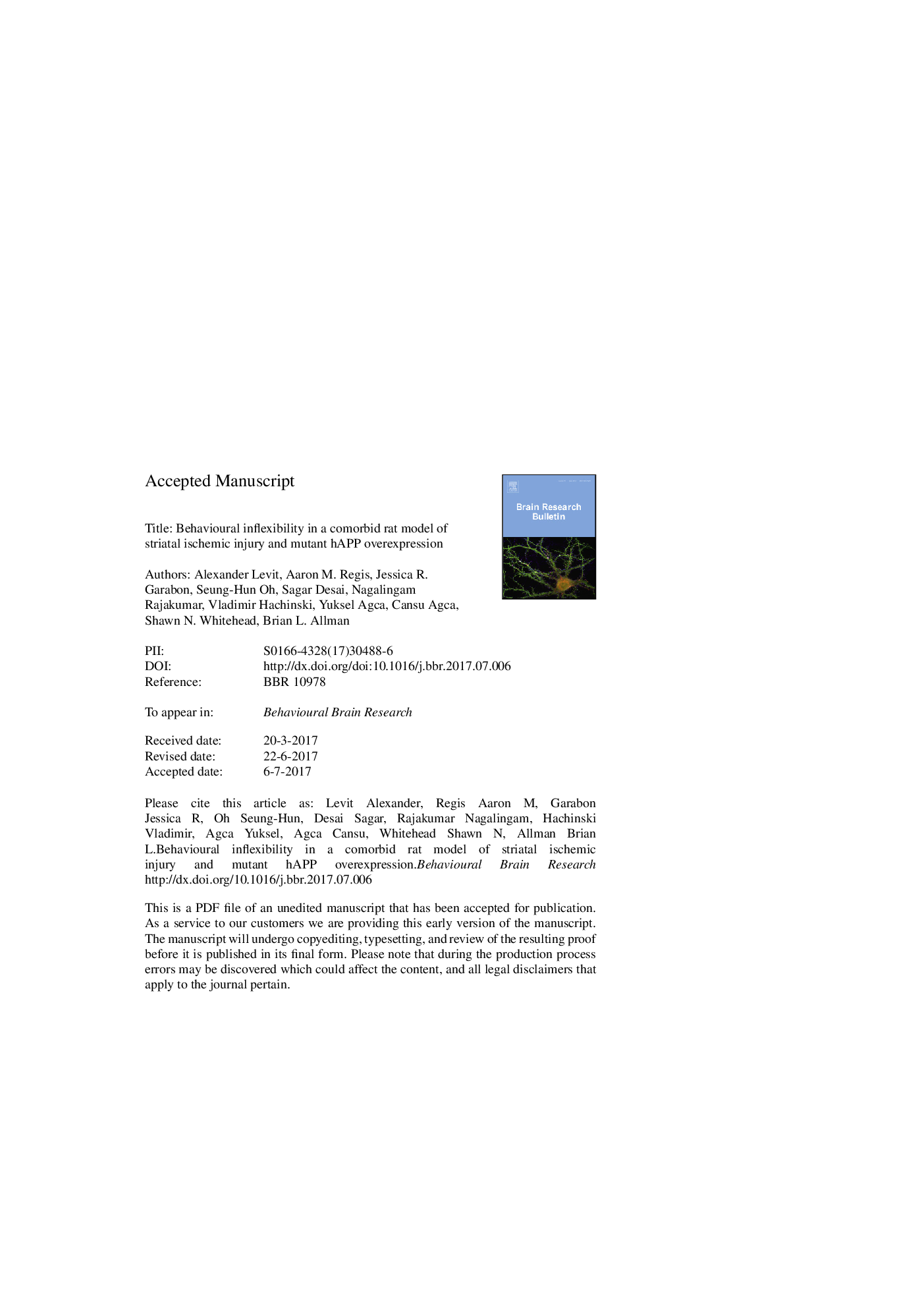| Article ID | Journal | Published Year | Pages | File Type |
|---|---|---|---|---|
| 5735385 | Behavioural Brain Research | 2017 | 38 Pages |
Abstract
Alzheimer disease (AD) and stroke coexist and interact; yet how they interact is not sufficiently understood. Both AD and basal ganglia stroke can impair behavioural flexibility, which can be reliably modeled in rats using an established operant based set-shifting test. Transgenic Fischer 344-APP21 rats (TgF344) overexpress pathogenic human amyloid precursor protein (hAPP) but do not spontaneously develop overt pathology, hence TgF344 rats can be used to model the effect of vascular injury in the prodromal stages of Alzheimer disease. We demonstrate that the injection of endothelin-1 (ET1) into the dorsal striatum of TgF344 rats (Tg-ET1) produced an exacerbation of behavioural inflexibility with a behavioural phenotype that was distinct from saline-injected wildtype & TgF344 rats as well as ET1-injected wildtype rats (Wt-ET1). In addition to profiling the types of errors made, interpolative modeling using logistic exposure-response regression provided an informative analysis of the timing and efficiency of behavioural flexibility. During set-shifting, Tg-ET1 committed fewer perseverative errors than Wt-ET1. However, Tg-ET1 committed significantly more regressive errors and had a less efficient strategy change than all other groups. Thus, behavioural flexibility was more vulnerable to striatal ischemic injury in TgF344 rats.
Keywords
Related Topics
Life Sciences
Neuroscience
Behavioral Neuroscience
Authors
Alexander Levit, Aaron M. Regis, Jessica R. Garabon, Seung-Hun Oh, Sagar J. Desai, Nagalingam Rajakumar, Vladimir Hachinski, Yuksel Agca, Cansu Agca, Shawn N. Whitehead, Brian L. Allman,
